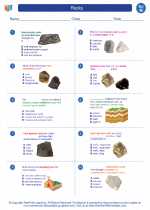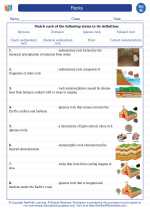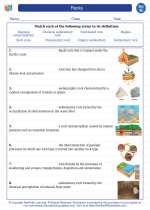Work in Science
In science, work is defined as the product of the force applied to an object and the distance over which the force is applied. The formula for work is:
Work (W) = Force (F) × Distance (d) × cos(θ)
Where:
W = work done
F = force applied
d = distance over which the force is applied
θ = angle between the force and the direction of motion
Study Guide
Here are some key points to understand about work:
- Definition: Work is done when a force is applied to an object and the object moves in the direction of the force.
- Units: The SI unit of work is the joule (J). One joule is equal to the work done when a force of one newton is applied to move an object one meter in the direction of the force.
- Direction of Force: The force and the displacement must be in the same direction for work to be done. If the force and displacement are perpendicular, no work is done.
- Angle: The angle θ between the force and the direction of motion affects the amount of work done. Work is maximized when the force is applied in the same direction as the motion (θ = 0°).
- Positive and Negative Work: Work is considered positive when the force and displacement are in the same direction, and negative when they are in opposite directions.
- Work-Energy Theorem: The work-energy theorem states that the work done on an object is equal to the change in its kinetic energy. This theorem is a powerful tool for analyzing the motion of objects.
Understanding the concept of work is important in various areas of science, including physics, engineering, and biomechanics. It helps in analyzing the transfer of energy and the performance of mechanical systems.
Remember to practice using the work formula and solving problems involving work, force, and distance to solidify your understanding of this topic.
Good luck with your studies!
[Work] Related Worksheets and Study Guides:
.◂Science Worksheets and Study Guides Eighth Grade. Rocks

 Worksheet/Answer key
Worksheet/Answer key
 Worksheet/Answer key
Worksheet/Answer key
 Vocabulary/Answer key
Vocabulary/Answer key
 Vocabulary/Answer key
Vocabulary/Answer key
 Vocabulary/Answer key
Vocabulary/Answer key
